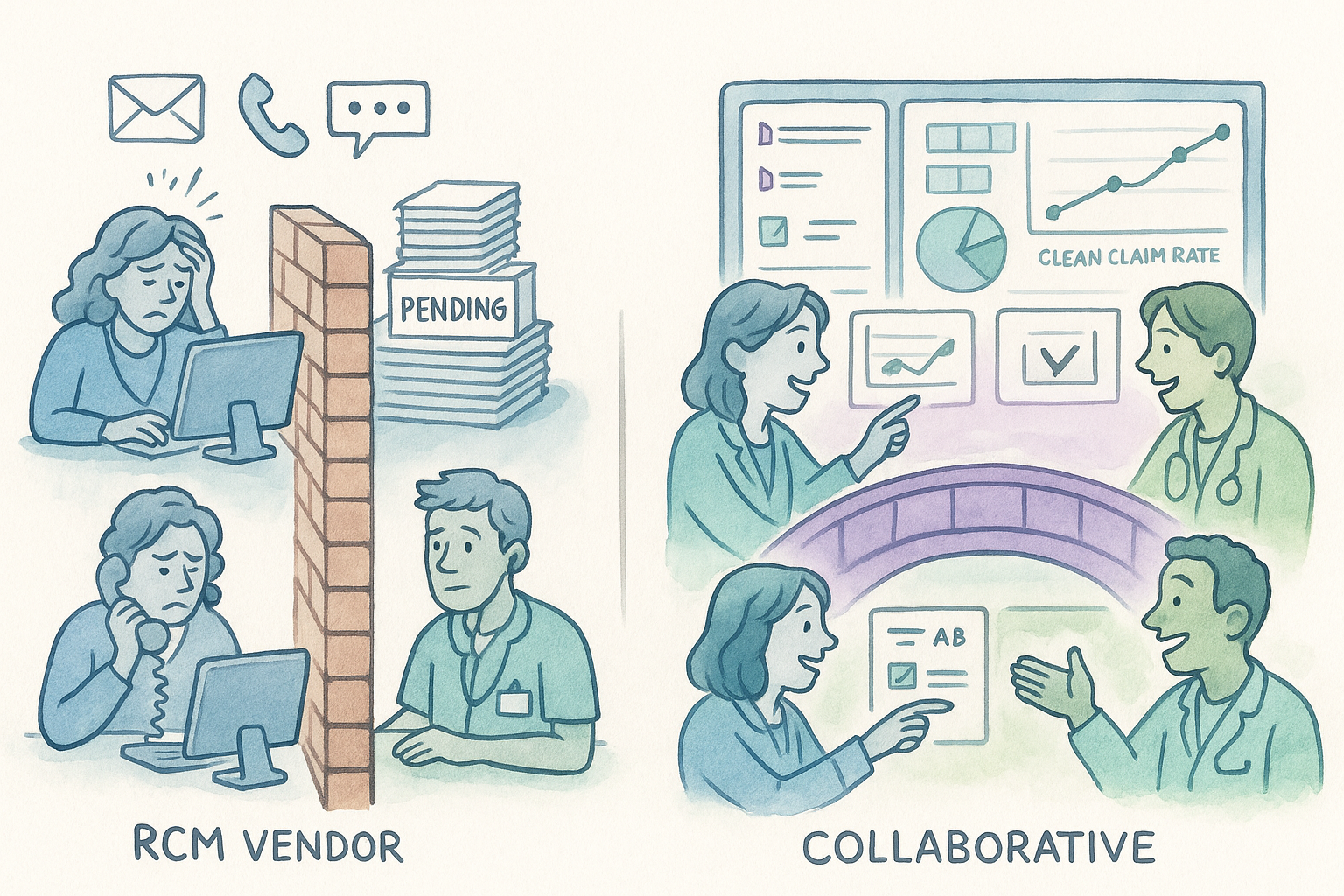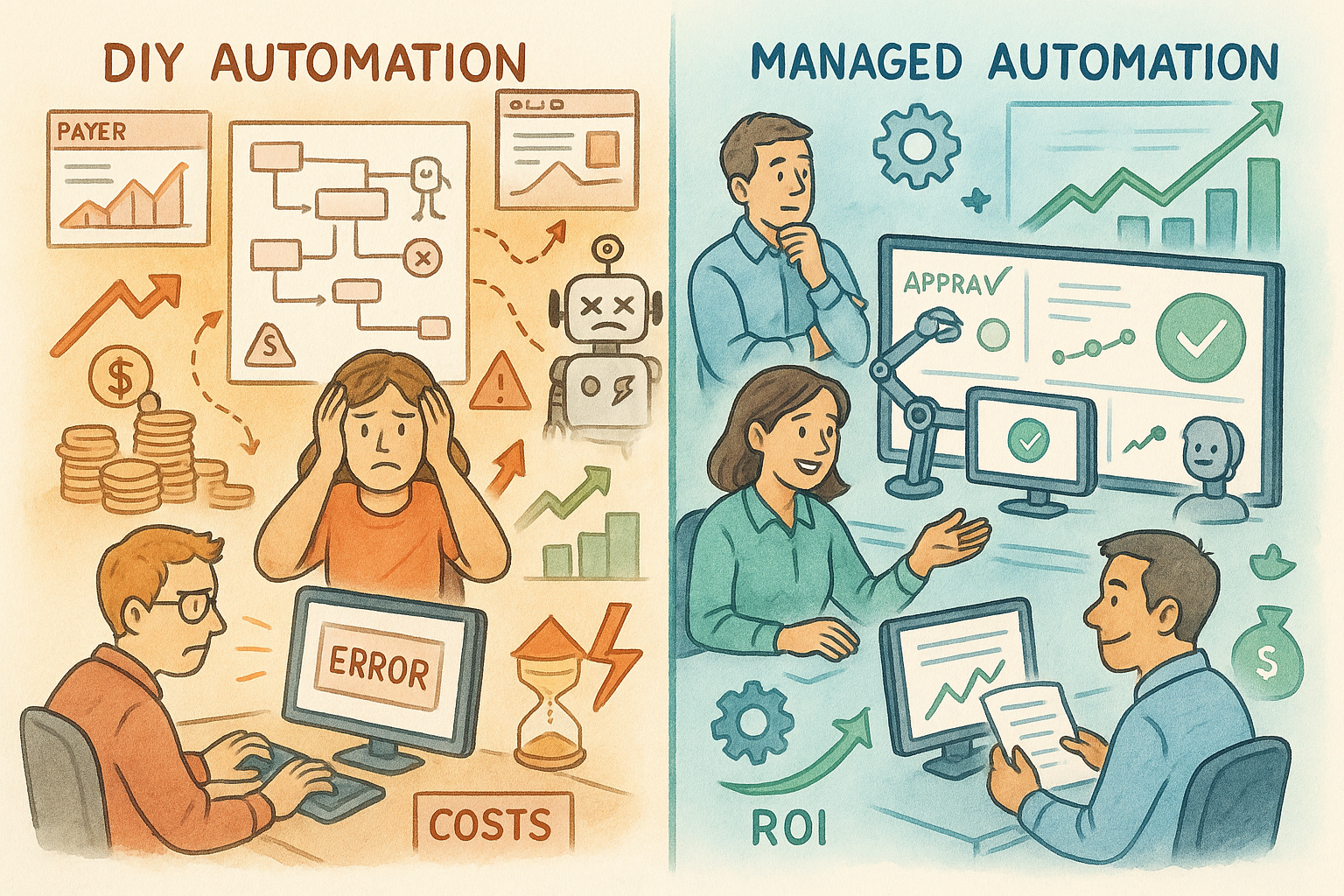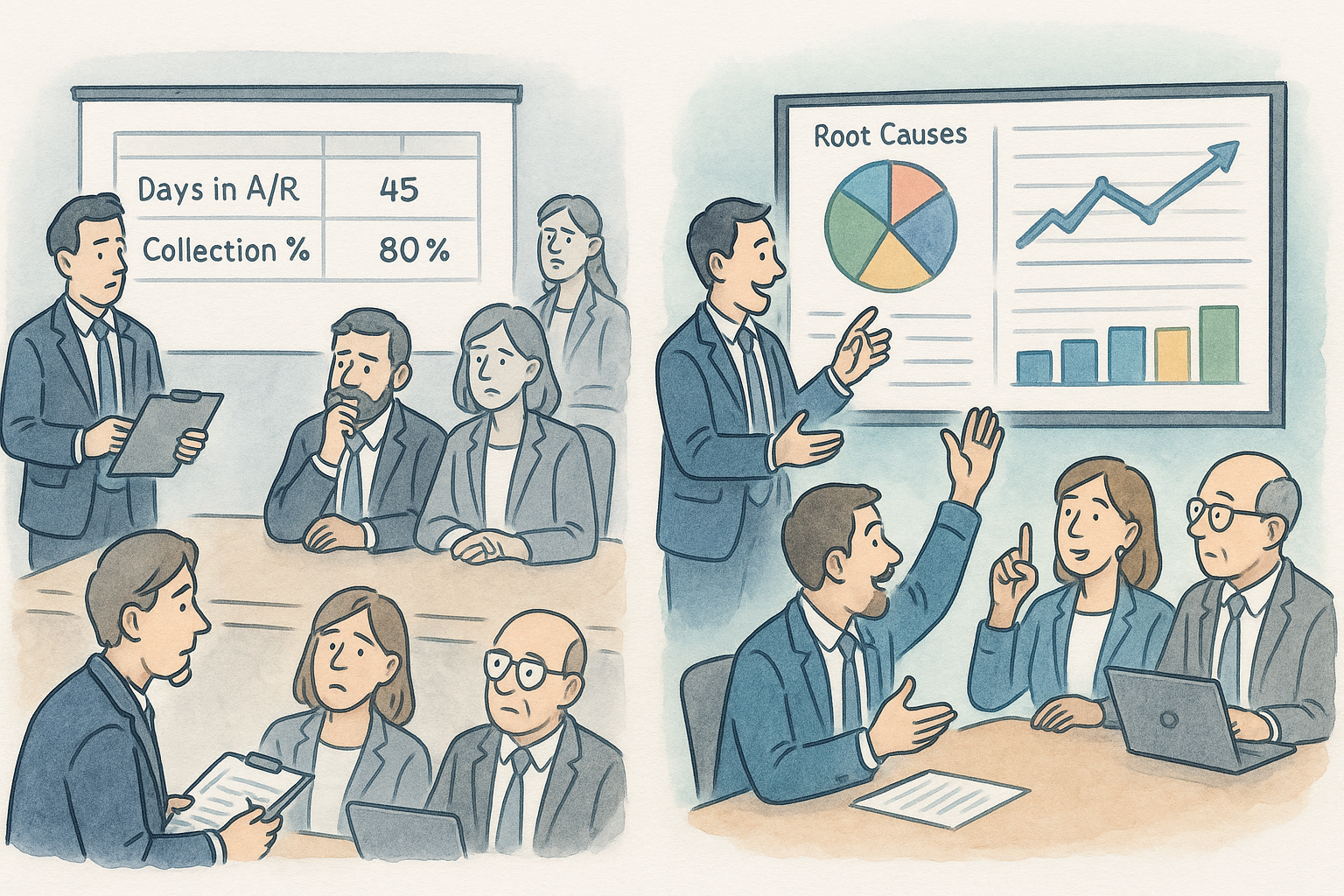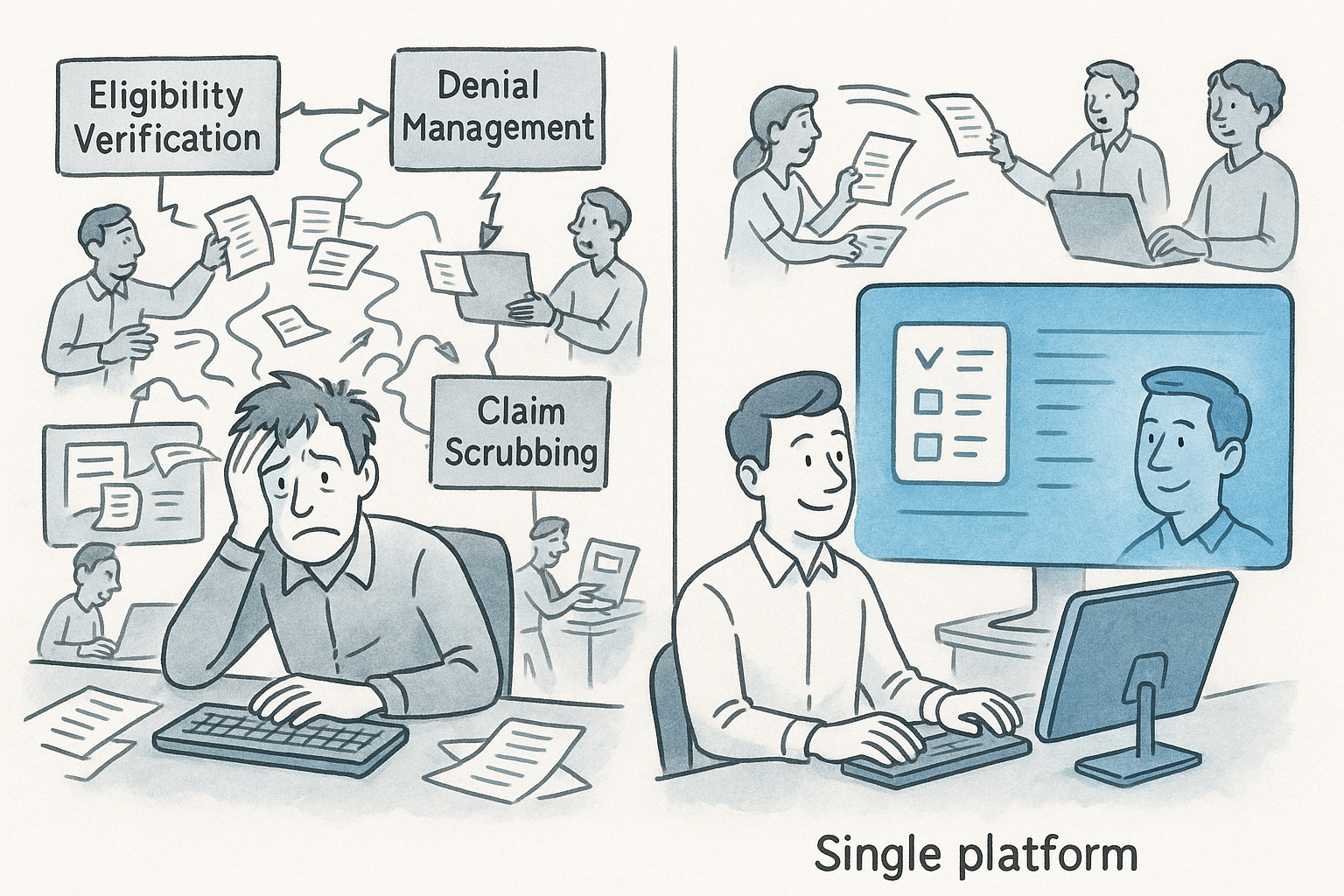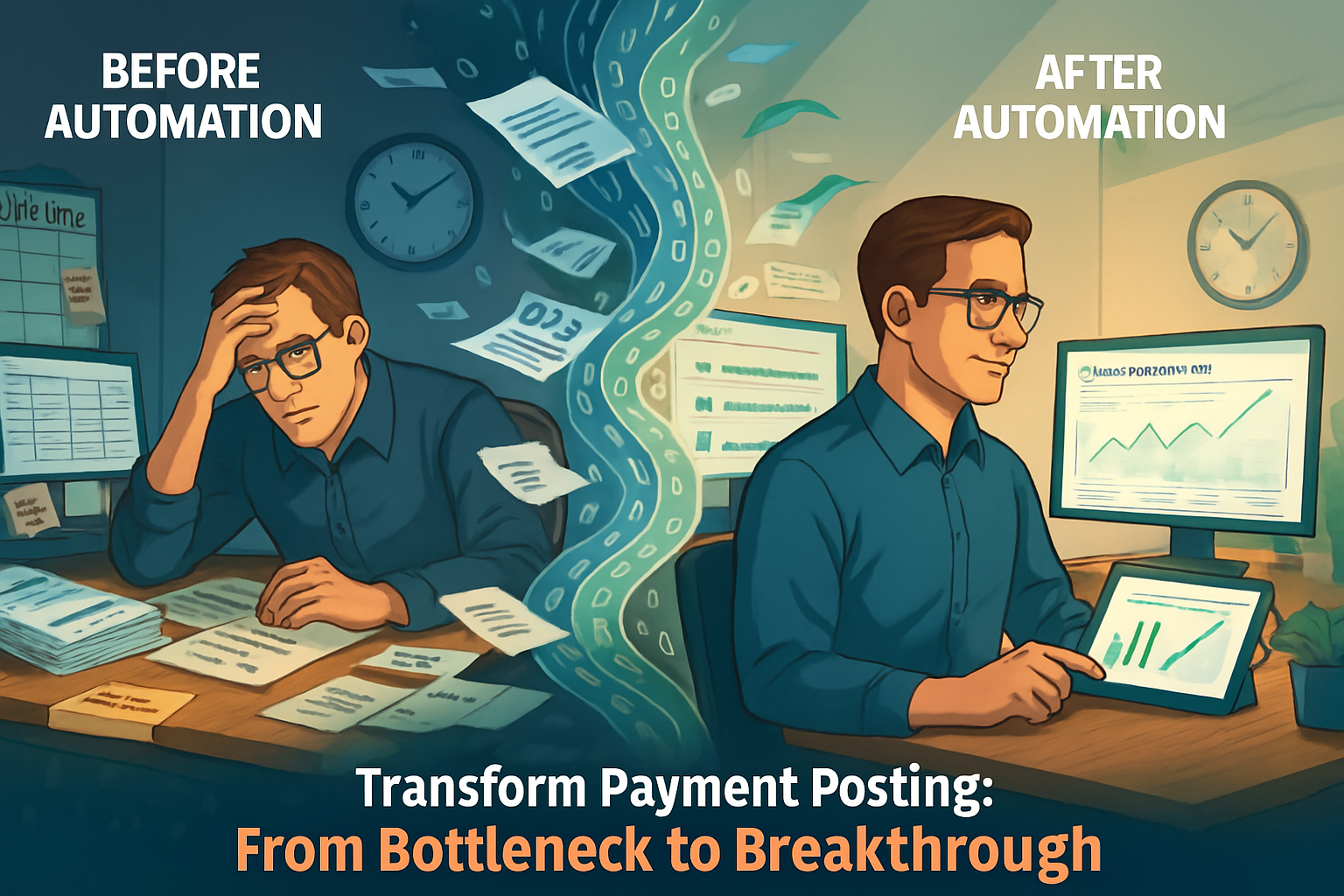Addressing the Disconnect Between Executives and Billing Teams
In the chaotic world of healthcare RCM, one of the most significant challenges lies in the disconnect between executives and the billing teams they employ. This separation is more than just geographical; it often involves a lack of communication, misaligned expectations, and assumptions that do not reflect the reality on the ground. Understanding and addressing this divide is crucial for any consultant working to optimize a healthcare organization’s RCM processes.
The Disconnect: Executives and Billing Teams
The geographical and conceptual gap between executives and billing teams often hinders operational efficiency in healthcare organizations. Billing teams, whether working in the same building, across town, or remotely, often have limited contact with the executives. The physician owners, CEOs and CFOs may only see the financial outcomes—how much money is recorded in the books and how much is deposited in the bank. When something goes wrong, the immediate assumption is often that the billing team is at fault.
However, this assumption is usually based on incomplete information. Executives may receive feedback only from a small number of long-term employees who have built relationships with the leadership. These employees might not always provide a full picture, either because they are unaware of the broader issues or because they are focused on protecting their department’s (or their own) reputation. This limited exchange of information can lead to misguided decisions that fail to address the underlying problems.
The Role of the Consultant: Communicating Complex Realities
As a consultant, one of the key tasks is to bridge this communication gap. This involves not only gathering accurate data but also presenting it in a way that resonates with executives who may not have a deep understanding of RCM complexities. The challenge is to simplify the intricacies of claims processing, denials management, and the overall revenue cycle without losing the critical details that drive change.
One effective approach is to translate data into tangible outcomes. For instance, presenting a breakdown of losses due to timely filing issues, comparing current revenue with the same period from the previous year, and explaining the contributing factors can help executives grasp the severity of the situation. By connecting the dots between different departments and their roles in the revenue cycle, a consultant can highlight the interdependence within the organization and the need for cohesive action.
Unused Tools and Overlooked Resources
Another striking issue that often emerges is the underutilization of tools and resources that the organization is already paying for. It’s not uncommon for billing teams to have access to advanced denial management modules or analytical tools that remain unused due to a lack of training, intimidation by the technology, or simply not knowing that these tools exist. This represents a significant waste of resources and a missed opportunity to improve efficiency.
For example, a consultant might discover that a healthcare organization has been paying for a denial analytics tool for years without using it. This oversight is often due to contract established back in time that is paid by monthly, recurring autodebited transaction. could be due to a disconnect between the CFO, who approves the budget, and the billing team, who might not even be aware that the tool is available. By identifying and addressing these gaps, the consultant can help the organization save money and improve performance.
Repairing Relationships: Building Trust and Understanding
One of the most delicate aspects of consulting in RCM is repairing relationships between executives and the billing teams. When poor financial results are blamed on the billing department, it can create a rift between the team members who feel unfairly criticized and the executives who are frustrated by the lack of improvement.
To mend this divide, it’s essential to educate both parties about the complexities of the revenue cycle. This includes helping executives understand that issues often originate from multiple departments, not just billing. For example, delays in closing notes by physicians or errors in insurance verification by the front line can significantly impact the billing process. By highlighting these interdependencies, the consultant can foster a more collaborative environment where everyone works towards a common goal.
Collaborative Solutions: Building a Stronger RCM Process
Ultimately, the aim is to foster an environment where both executives and billing teams work in tandem to optimize the revenue cycle. This requires regular communication, transparent data sharing, and ensuring that tools and resources are available and utilized. By cultivating a culture of collaboration and unified goals, every level of a healthcare entity organizations can close the gap between leadership and operations, leading to better financial outcomes and a more effective RCM process.

